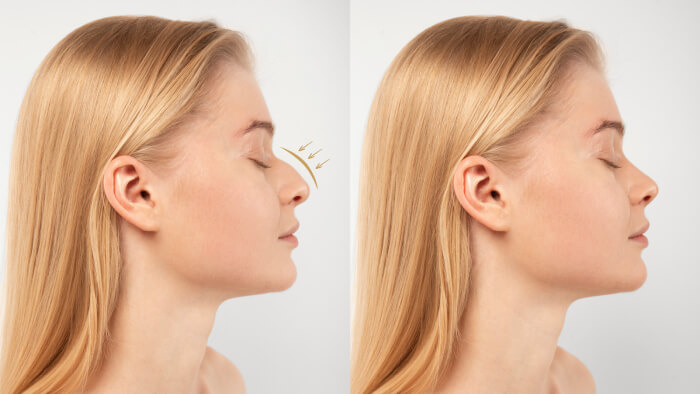Rhinoplasty: A journey towards enhanced facial harmony
Content
- What is rhinoplasty?
- Reasons for choosing rhinoplasty
- The consultation process of rhinoplasty
- How to prepare for rhinoplasty surgery?
- Which is the surgical procedure of rhinoplasty?
- Recovery and results from rhinoplasty
- Which is the impact of rhinoplasty?
- How to choose the right rhinoplasty surgeon?
- Conclusion
Rhinoplasty goes beyond a cosmetic procedure; it's a profound exploration of self-realization and facial harmony. This surgery transcends mere physical changes, providing a path to align external looks with internal self-perception. For many, it's not just about aesthetics but restoring balance and proportion, leading to increased confidence. The decision for rhinoplasty is deeply personal, intertwining physical changes with emotional and psychological growth. Whether for structural issues, breathing problems, or aesthetics, the journey is about enhancing outer appearance and fostering inner well-being.

What is rhinoplasty?
Rhinoplasty is a surgical procedure that modifies the shape, size, or proportions of the nose. It can be performed for aesthetic reasons, functional corrections, or both. Beyond its cosmetic aspects, rhinoplasty considers the intricate anatomy of the nose to achieve facial harmony and balance. It is essential to grasp that rhinoplasty is a personalized journey, tailored to individual goals and needs. Consulting with a qualified surgeon, discussing expectations, and comprehending the potential outcomes contribute to a thorough understanding of the rhinoplasty process.
Reasons for choosing rhinoplasty
People choose rhinoplasty for diverse reasons, such as correcting birth defects or injuries, addressing structural issues causing breathing difficulties, and enhancing facial harmony for cosmetic reasons. Common motivations include:
- Cosmetic enhancement: To reshape the nose for aesthetic purposes, addressing concerns such as size, shape, or asymmetry.
- Improved facial harmony: Seeking better balance and proportionality of facial features.
- Functional improvement: Correcting breathing difficulties caused by structural issues like a deviated septum.
- Congenital deformities: Addressing nose-related birth defects for both cosmetic and functional reasons.
- Post-traumatic reconstruction: Restoring the nose's appearance and function after injury or trauma
The consultation process of rhinoplasty
The journey starts with a consultation where a skilled surgeon discusses your goals, evaluates your facial structure, and uses computer imaging to illustrate potential rhinoplasty outcomes, ensuring realistic expectations.
- Defining goals: Patients discuss their aesthetic and functional goals with the surgeon, outlining specific changes they desire in the shape, size, or symmetry of their nose.
- Evaluation of nasal structure: The surgeon conducts a thorough examination of the patient's nasal structure, considering both cosmetic and functional aspects.
- Open dialogue: Detailed discussions between the patient and surgeon explore expectations, potential outcomes, and any concerns related to the rhinoplasty procedure. The surgeon provides insights into what is realistically achievable, considering the patient's facial features and anatomical considerations.
- Computer imaging: In some cases, surgeons use computer imaging to visually communicate potential results, helping patients visualize the expected changes.
- Collaborative decision-making: The consultation serves as a collaborative process, fostering trust and ensuring that the final decision aligns with the patient's desires while maintaining realistic expectations.
How to prepare for rhinoplasty surgery?
Preparation is key. Patients are advised to avoid certain medications and smoking to ensure a smooth surgery and recovery. A detailed plan, including the surgical technique and anesthesia choice, is tailored to the patient's needs.Follow any dietary guidelines provided by your surgeon. Lastly, mentally prepare for the recovery process, understanding that swelling and bruising are common initially. This preparation ensures a smoother experience and enhances the likelihood of achieving desired results.
Which is the surgical procedure of rhinoplasty?
Rhinoplasty is typically an outpatient procedure, taking one to two hours under general or local anesthesia. The surgeon may perform a closed procedure, where incisions are hidden inside the nose, or an open procedure, where an incision is made across the columella, the narrow strip of tissue that separates the nostrils. The surgeon reshapes the bone and cartilage under the skin to achieve the desired appearance.
Recovery and results from rhinoplasty
Post-operative care is crucial for a successful outcome. Patients may experience swelling and bruising around the eyes, which subsides within a few weeks. The final shape of the nose might take up to a year to fully refine. Having someone available to assist with post-surgery care and transportation during the initial recovery period is highly recommended. Creating a comfortable recovery space at home with extra pillows, ice packs, and entertainment is essential. Adhering to specific preoperative instructions, including guidelines on fasting, hygiene, and clothing, is vital for a successful rhinoplasty experience.
Which is the impact of rhinoplasty?
Rhinoplasty can have a profound impact on a person's self-esteem and quality of life. It can bring a renewed sense of confidence and satisfaction with one's appearance. For those with breathing issues, it can significantly improve respiratory function. The impact of rhinoplasty is multidimensional, encompassing physical, emotional, and social dimensions, and varies based on individual goals and expectations. Consulting with a qualified plastic surgeon and setting realistic expectations are crucial steps in understanding and maximizing the positive impact of rhinoplasty.
How to choose the right rhinoplasty surgeon?
Selecting a qualified and experienced plastic surgeon is vital. Look for board certification, a good track record, and positive patient testimonials.Look for board certification, experience in rhinoplasty, and positive patient testimonials. Review before-and-after photos to assess the surgeon's skill. Effective communication during consultations is vital for understanding expectations.Personal comfort and a positive rapport with the surgeon also contribute to a successful rhinoplasty experience. The right surgeon can make all the difference in achieving a successful and satisfying outcome.
Conclusion
The journey of rhinoplasty is one that extends far beyond the surgical procedure itself. It goes beyond physical changes, encompassing emotional growth. The procedure isn't just a medical intervention; it's an artistic endeavor demanding skill and precision. Choosing rhinoplasty should be a thoughtful decision guided by a skilled surgeon's expertise. Ultimately, it's not just about a new appearance but a profound enhancement of facial harmony and quality of life.
If you're considering this journey, we take pride in collaborating with the best rhinoplasty doctors in Albania. Contact us to explore how our expertise can guide you towards not just a new appearance, but a profound enhancement of facial harmony and quality of life.


